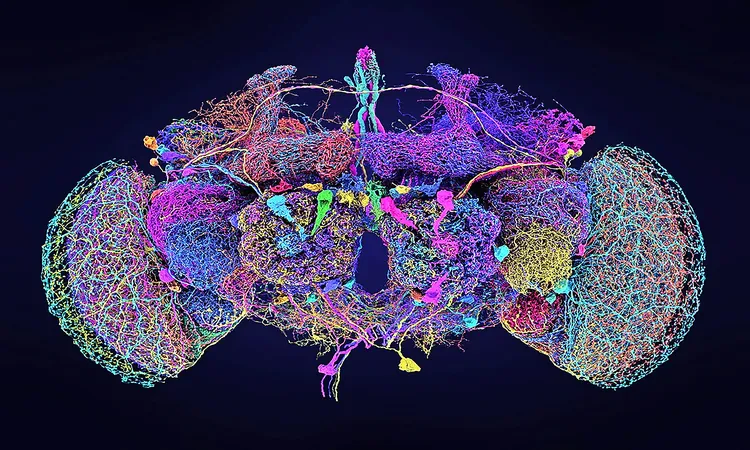
Groundbreaking Achievement: The First Complete Wiring Diagram of a Brain Unveiled
2024-10-12
Author: Jessica Wong
In an extraordinary scientific breakthrough, researchers have unveiled the first comprehensive wiring diagram of an entire brain, likening it to gazing at an intricate city map. This monumental achievement marks a significant milestone in neuroscience, as scientists have successfully mapped every neuron in an adult fruit fly brain, totaling 139,255 neurons and an astounding 50 million connections between them.
This pioneering project has been made possible by the FlyWire Consortium, an international alliance of scientists from prestigious institutions, including the MRC Laboratory of Molecular Biology in Cambridge, Princeton University, and the University of Vermont. Their findings, published in the journal Nature, offer a complete neural map that surpasses previous studies that only covered much simpler organisms, such as the 3,016 neurons found in fruit fly larvae or the 302 neurons of nematode worms.
What Makes Mapping Fly Brains So Important?
Despite the fruit fly's small neuronal count compared to the human brain's 86 billion neurons, it serves as a crucial model for understanding brain function. Its manageable size allows scientists to experiment with breeding and genetic manipulation, leading to insights into how changes within neural circuits affect behavior. Remarkably, many of the genetic and developmental pathways found in fruit flies exhibit striking similarities to those in humans, highlighting their potential as a model organism for further studies.
By delving into this wiring diagram, researchers aim to uncover fundamental principles of brain function that can extend to more complex brains, including our own. The precise understanding of neural connections in fruit flies can potentially translate into insights regarding human behaviors and cognitive functions.
Unveiling the Process: An Engineering Marvel
Creating this detailed neural map involved slicing a fruit fly brain, which is less than a millimeter wide, into 7,000 thin sections. These meticulously prepared slices were scanned using high-resolution electron microscopy, allowing researchers to reconstruct the shapes and connections of the various neurons.
The analysis of this vast amount of data was facilitated by machine learning, reflecting the transformative role of artificial intelligence in modern neuroscience. An estimated 33 person-years were dedicated to proofreading the data, ensuring its integrity and reliability.
The Future of Neuroscience: Simulating Brain Functions
Beyond mapping, the research aims to set the stage for simulating brain responses to external stimuli. Utilizing advanced AI technology, researchers have begun predicting whether individual synapses are inhibitory or excitatory—a critical function for creating accurate digital simulations of brain activity. Dr. Gregory Jefferis, a co-author of the study, emphasized the necessity of gathering diverse data types to develop dependable simulations of brain functionality.
A New Era for Brain Research
The implications of this research extend into new avenues of study, including examining the differences between male and female fruit fly brains and how these variances may impact behavior and neurological conditions. The comprehensive wiring diagram developed through this inquiry opens doors to numerous potential studies that were previously not feasible.
As research progresses, the findings may also help in modeling and understanding neurological diseases and developmental disorders, paving the way for advances in therapies for humans.
This monumental achievement not only pushes the boundaries of what we know about brain function but also illustrates the incredible potential of collaborative, interdisciplinary research in neuroscience.


 Brasil (PT)
Brasil (PT)
 Canada (EN)
Canada (EN)
 Chile (ES)
Chile (ES)
 España (ES)
España (ES)
 France (FR)
France (FR)
 Hong Kong (EN)
Hong Kong (EN)
 Italia (IT)
Italia (IT)
 日本 (JA)
日本 (JA)
 Magyarország (HU)
Magyarország (HU)
 Norge (NO)
Norge (NO)
 Polska (PL)
Polska (PL)
 Schweiz (DE)
Schweiz (DE)
 Singapore (EN)
Singapore (EN)
 Sverige (SV)
Sverige (SV)
 Suomi (FI)
Suomi (FI)
 Türkiye (TR)
Türkiye (TR)